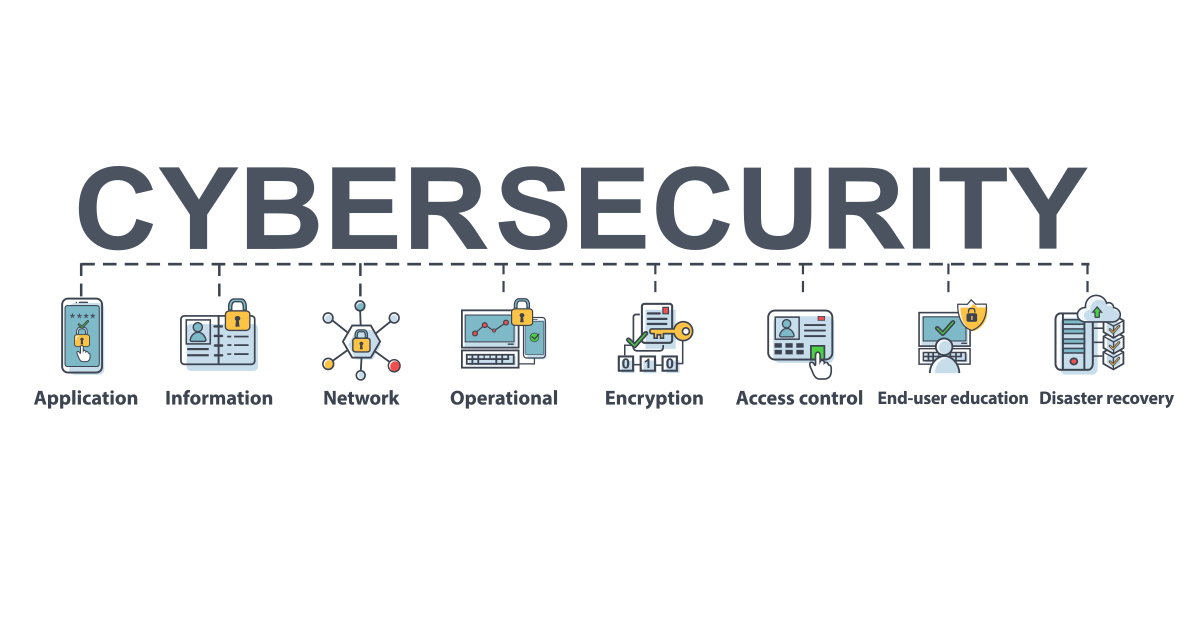CYBERSECURITY

Cybercrimes are illegal activities that are carried out using computers, computer networks, and the internet. These crimes often target individuals, organizations, or governments and can have serious consequences. Here are some common cybercrimes:
-
Phishing: Phishing involves sending deceptive emails or messages that appear to be from a legitimate source but are designed to trick recipients into revealing sensitive information, such as passwords, credit card numbers, or personal identification.
-
Identity Theft: Identity theft occurs when someone steals another person's personal information, such as Social Security numbers or bank account details, with the intent to commit fraud, financial theft, or other criminal activities.
-
Malware: Malicious software, or malware, includes viruses, worms, Trojans, ransomware, and spyware. These programs are designed to damage, disrupt, or gain unauthorized access to computer systems and data.
-
Cyberbullying: Cyberbullying involves using digital communication tools like social media, email, or text messages to harass, threaten, or humiliate individuals. It can have serious psychological and emotional effects on victims.
-
Online Scams: Various online scams exist, including advance-fee fraud, lottery scams, and romance scams. These scams aim to deceive individuals into providing money or personal information to fraudsters.
-
Hacking: Hacking involves unauthorized access to computer systems or networks. Hackers may steal data, disrupt services, or gain control of systems for various purposes, including financial gain, activism, or espionage.
- Cyberstalking: Cyberstalking is a pattern of online harassment or persistent unwanted attention directed at an individual. It can involve threats, monitoring, or intimidation and may escalate to physical harm
-
Data Breaches: Data breaches involve the unauthorized access, acquisition, or release of sensitive data, such as personal information or financial records. These breaches can have severe consequences for individuals and organizations.
-
Online Piracy: Online piracy involves the unauthorized distribution or downloading of copyrighted materials, such as movies, music, software, or books, without permission from the copyright holders.
- Distributed Denial of Service (DDoS) Attacks: In a DDoS attack, multiple compromised computers are used to flood a target system with excessive traffic, rendering it inaccessible to legitimate users. These attacks can disrupt online services and websites
- Cybersecurity refers to the practice of protecting computer systems, networks, software, and data from various forms of digital threats, attacks, and unauthorized access. In an increasingly interconnected and digital world, cybersecurity is of paramount importance to individuals, organizations, and governments to safeguard sensitive information, maintain privacy, and ensure the integrity and availability of digital resources
- Confidentiality in cybersecurity ensures that sensitive data remains private and accessible only to authorized individuals or systems. Measures to achieve confidentiality include encryption, access controls, and user authentication.
- Integrity ensures that data remains accurate and unaltered during storage, transmission, and processing. Data integrity is maintained through mechanisms like checksums and digital signatures
- Authentication verifies the identity of users and systems trying to access a network or data. Common authentication methods include passwords, biometrics, and multi-factor authentication (MFA).
- The National Cybercrime Reporting Portal (NCRP) is a centralized online portal for reporting cybercrime in India. It was launched in 2019 by the Ministry of Home Affairs (MHA) to provide a single platform for citizens to report cybercrime incidents. The NCRP is accessible to all citizens of India, regardless of their location or the type of cybercrime they have experienced.
- To report a cybercrime incident on the NCRP, citizens need to create an account and fill out a complaint form. The form requires basic information about the victim, the accused, and the nature of the cybercrime incident. Citizens can also attach relevant evidence, such as screenshots, emails, or chat logs, to their complaint.
- Once a complaint is submitted, it is assigned to a law enforcement agency for investigation. The NCRP also provides a tracking system so that citizens can check the status of their complaint at any time.
- The NCRP is a valuable resource for citizens who have been victims of cybercrime. It provides a convenient and user-friendly platform for reporting cybercrime incidents. The NCRP also helps law enforcement agencies to track and investigate cybercrime more effectively.
|
Previous Year Questions
1.In India, under cyber insurance for individuals, which of the following benefits are generally covered, in addition to payment for the loss of funds and other benefits? (UPSC CSE 2020)
1. Cost of restoration of the computer system in case of malware disrupting access to one's computer
2. Cost of a new computer if some miscreant wilfully damages it, if proved so
3. Cost of hiring a specialized consultant to minimize the loss in case of cyber extortion
4. Cost of defence in the Court of Law if any third party files a suit
Select the correct answer using the code given below:
A.1, 2 and 4 only
B.1, 3 and 4 only
C.2 and 3 only
D.1, 2, 3 and 4
Answer (D)
|




